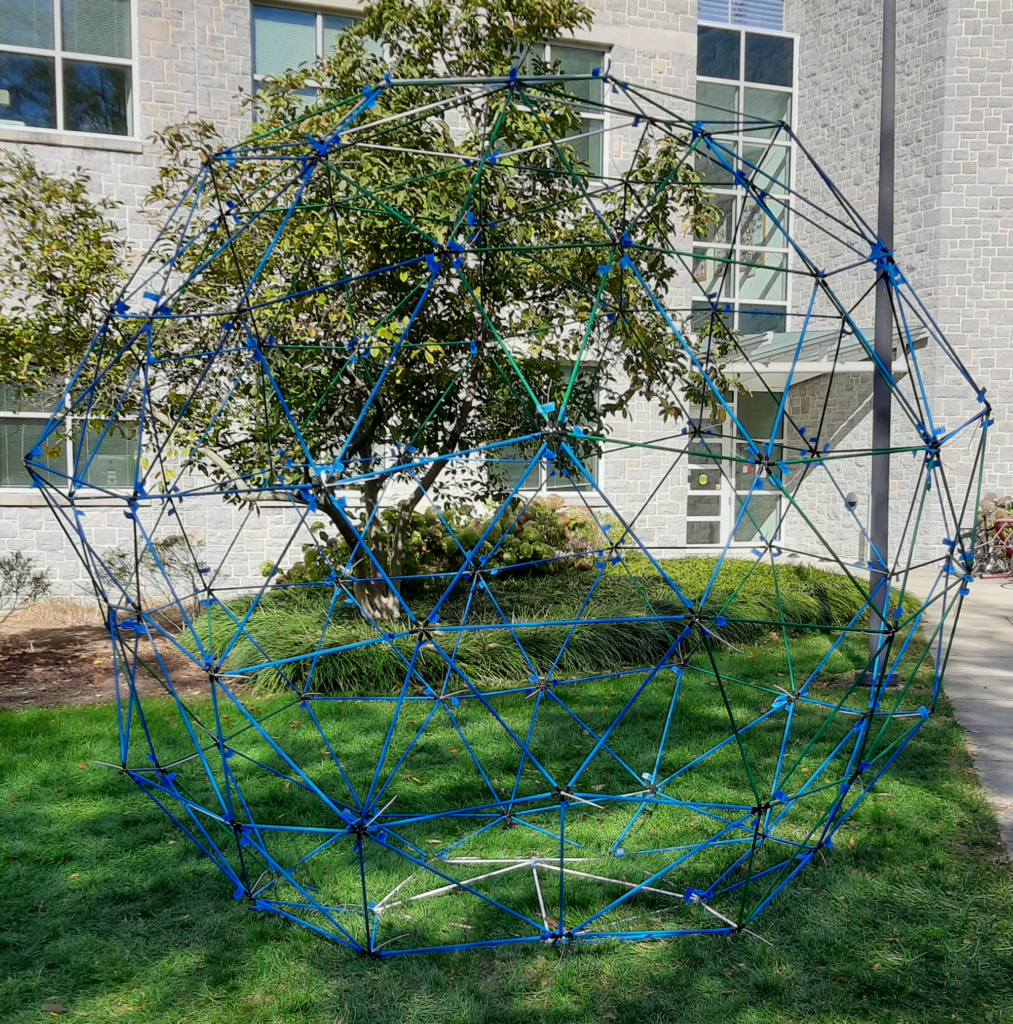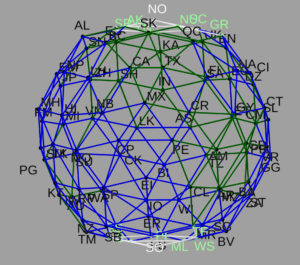Rhombiglobe
For this installation commissioned by the Dickinson College mathematics department, we chose a construction technique that goes all the way back to a construction from 2016, but this time with a twist. All previous installations done with this technique used only one length of rod, producing rigid equilateral polyhedra. But I had long wanted to construct a rhombic enneacontahedron, a shape that George Hart introduced me to with one of his artworks.
Although that polyhedron is equilateral, consisting of 90 rhombi of two types, it is not rigid by Cauchy’s Theorem on polyhedra: each face is a quadrilateral, and so no face is by itself rigid. Hence, it’s necessary to brace the rhombic faces. Since there are two different face shapes, that means there are two additional rod lengths for the lengths of diagonals of those two different rhombi.
Further, the sponsors decided to proceed with a design in which the rods were colored to correspond to the ice caps, land masses, and oceans of our planet Earth, in honor of the world in which we live and a contemporaneous conference on climate change and other ecological issues.
This post will be fleshed out as time permits, but here’s a picture of the completed construction on site at Dickinson college (more below):

This photo is taken from a viewpoint over the southern tip of Mexico and the Central American land bridge to South America (since there are “only” 180 edges to this polyhedron, the representation of land masses is by necessity quite approximate). For comparison, here’s an image of the pre-build rendering of the Rhombiglobe from essentially the same viewpoint:

You may notice the actual construction has a decidedly “non-spherical” aspect on its left, in the midst of the Pacific Ocean. That phenomenon was perplexing in the midst of the build, but later analysis revealed that it was a direct side effect of there being nine different types of pieces: three colors of rod in three lengths each. One of the participants in the group construction inadvertently swapped one of the longer and one of the middle-sized blue rods in the neighborhood of the bulge. The result was that by dint of perseverance, we managed to construct a geometrically “impossible” polyhedron, which naturally adopted a non-spherical shape as it attempted to resolve all the extra stress that the incompatible edge lengths created.

